Samsung QE65S95B Review
Samsung's first OLED in a while is an impressive one
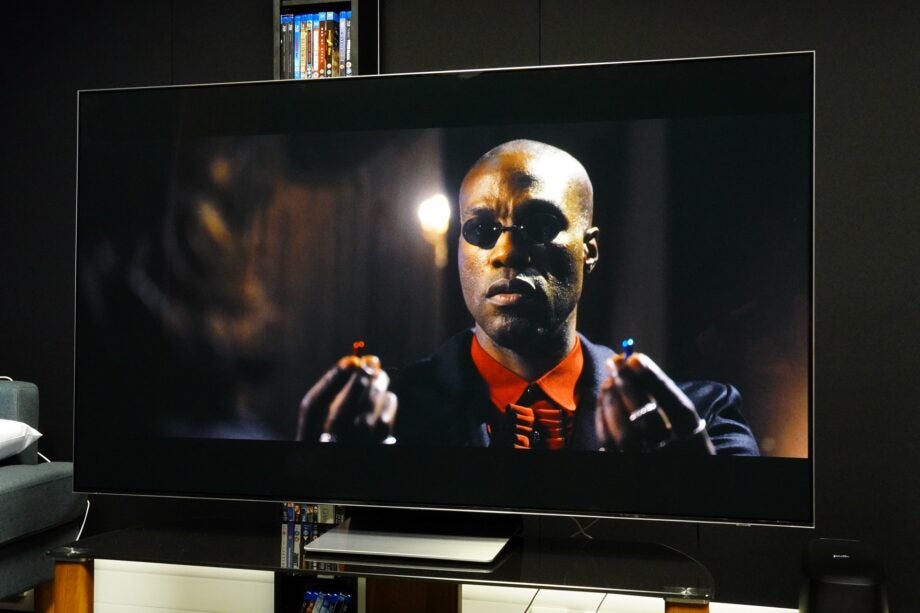

Verdict
The Samsung S95B is an impressive OLED with high levels of brightness and, at times, very good picture performance. Its picture does need tweaking out the box, and the new smart interface feels like a step back rather than a step forward. Gamers will enjoy the level of features for a high-quality gaming experience.
Pros
- Impressively slim screen
- Great for gaming
- Expressive and colourful picture performance
- Big, loud audio performance
- Great viewing angles
Cons
- No Dolby Vision
- Sluggish smart remote
- Picture settings require tweaking
- Speakers suffer from bass distortion
Availability
- UKRRP: £2799
- USARRP: $2999
- EuropeRRP: €3699
- CanadaRRP: CA$4499
- AustraliaRRP: AU$3899
Key Features
- PanelFeatures Quantum Dot colour technology
- SoundDolby Atmos support
- ProcessorNeural Quantum Processor 4K for brightness/upscaling
Introduction
The Samsung S95B is one of the first in a new wave of OLED TVs to hit the market, aiming to take panel technology beyond its current limitations.
It’s a QD-OLED (which stands for Quantum Dot OLED), and the S95B and Sony’s A95K are the first TVs to adopt the panel technology. The panels are made by Samsung Display, an about turn for the South Korean company, who left the OLED market after one attempt to forge their own path with its QLED TVs.
QD-OLED does everything an OLED does but, it claims it can do it better. We were wowed by the A95K, but how does Samsung’s S95B fare?
Design
- Thin panel screen
- Elegant appearance
- Stand with cable feature
I’ve read elsewhere that the S95B’s build quality isn’t as robust as the A95K’s. While it’s not as hefty I don’t feel the S95B’s construction is as diminished; the slight bendiness to the panel won’t play a factor unless you brush past with force.
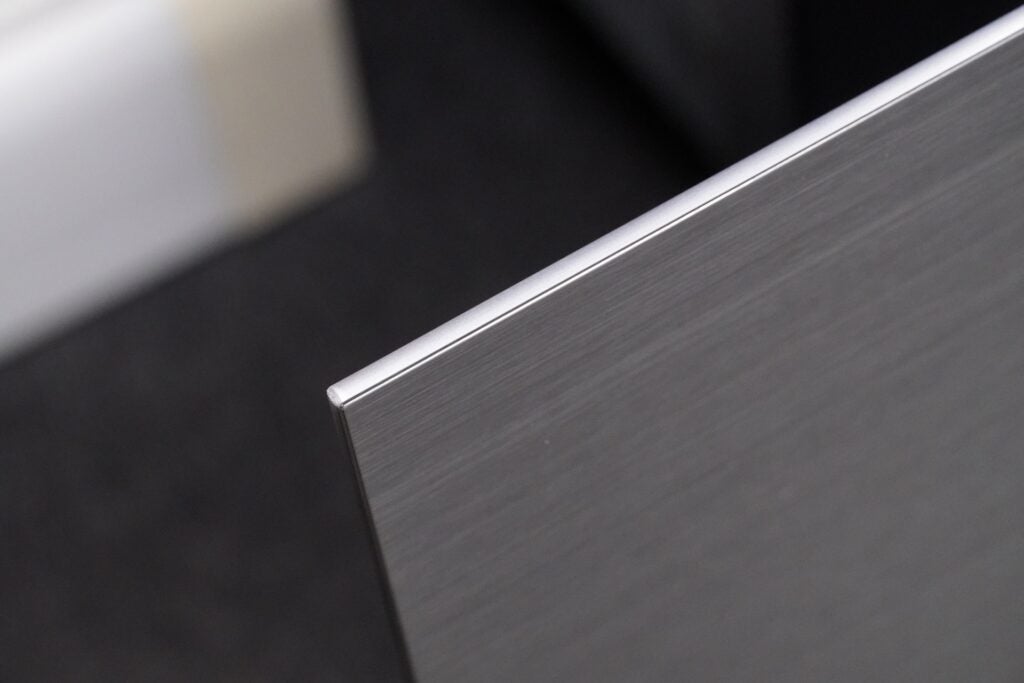
From an aesthetic perspective, the S95B is an elegantly thin-looking TV. The panel is amazingly narrow in most areas, though the rear packaging that holds the processor, speakers and connections means the overall depth of the screen juts out at 39.9mm – by comparison, the LG G2 is 24.3mm.
With its thin bezel trim that frames the screen, the QE65S95B sports a minimalist sleek appearance from a head-on view. This is a superb-looking screen whether it’s on a stand or wall-mounted.
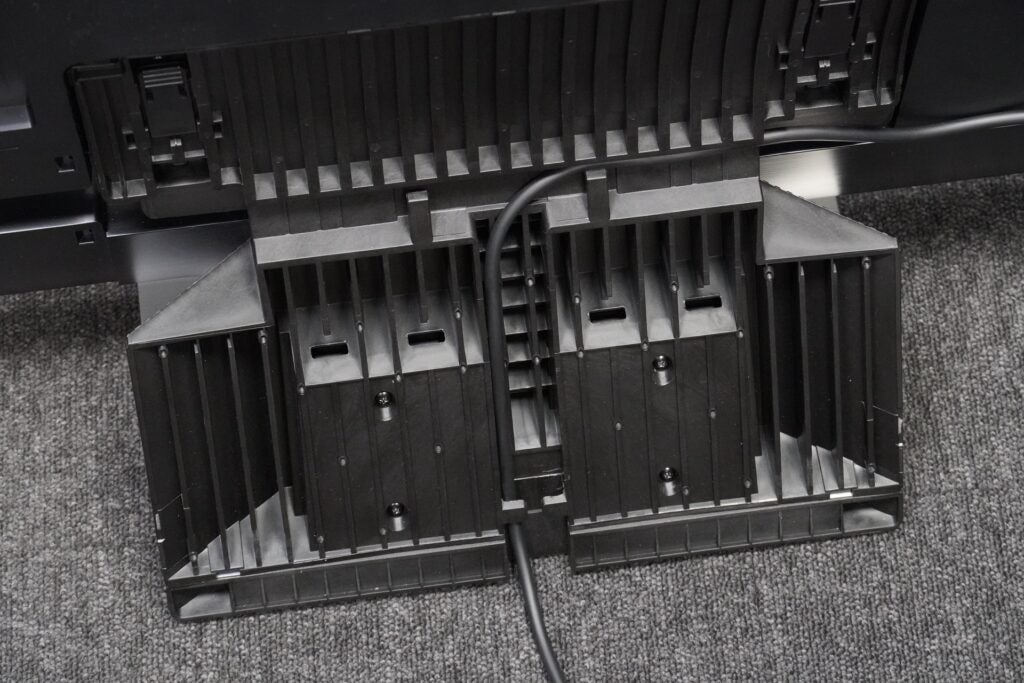
The stand takes a to the screen, but provides robust support. There are various areas in the back of the stand to route cables through and keep the rear area tidy, with the cover helping to conceal it. The S95B offers a tidy and neat installation for those who dislike cables trailing everywhere.
Interface
- Sluggish smart remote
- Lots of streaming apps
- Free access to TV Plus channels
The new form of Tizen has graduated to a full-screen interface, and while I don’t mind the appearance as much as some, even though it does lack the simplicity of the previous version’s ‘shelves’. It’s easy enough to navigate, though it does feel as if some features take a few more presses to reach than they did before.
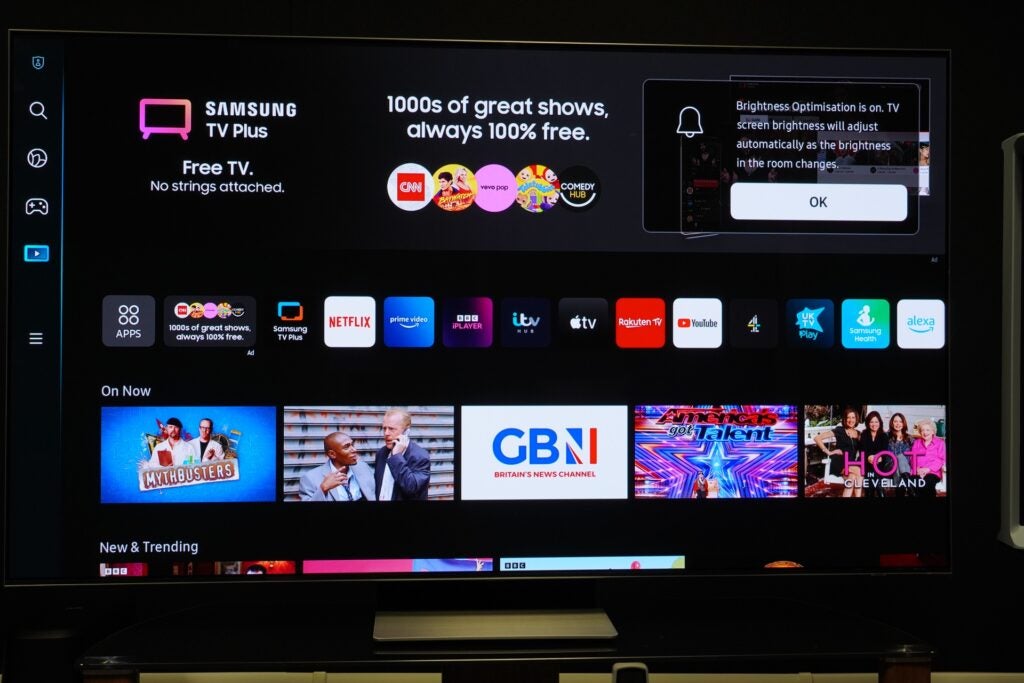
Two remotes are provided, one a standard, chunkier remote and the other is slim, slender and eco-friendly smart version that can be charged by ambient room light (or USB-C). Its face features minimal buttons with a navigational d-pad, shortcuts, voice control access, and quick buttons for opening apps such as Disney+ and Netflix. Curiously, there’s no support for checking the current battery life of the smart remote in the settings like there is on other Samsung sets.
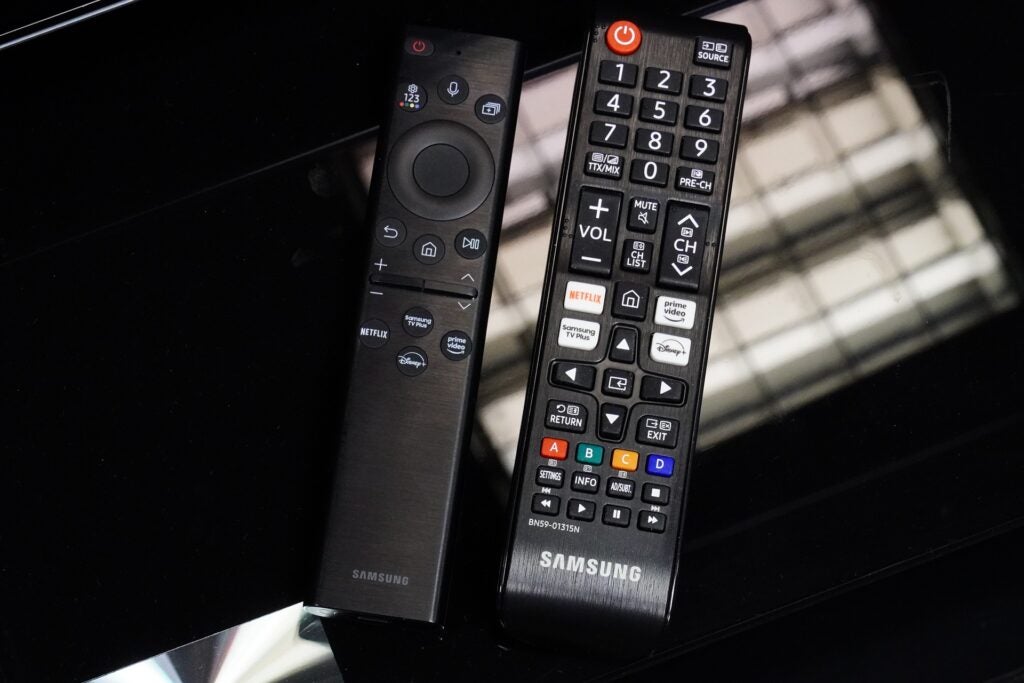
Presses on the smart remote don’t produce a swift enough response on screen. Initially I thought I wasn’t pointing towards the right area on the TV. But even finding the sweet spot, it can still take a few jabs for it to respond. The normal battery-powered remote is much faster to navigate the interface by comparison.
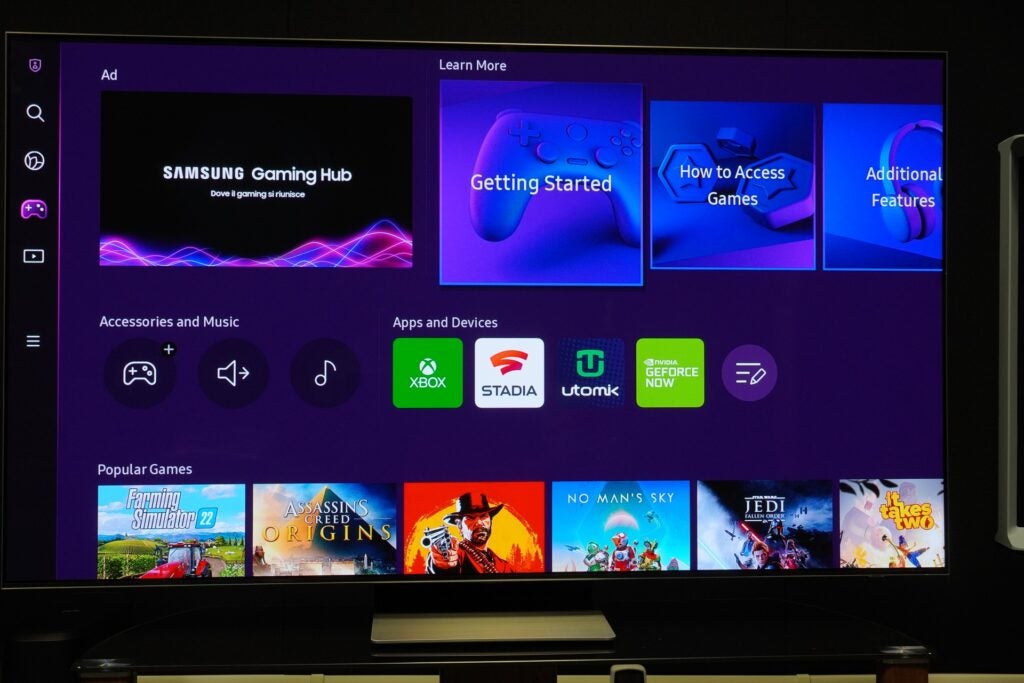
The interface has been divided into five sections: Search, Ambient, Gaming, Media and Menu. Media has access to streaming apps; Gaming is full of cloud gaming services and is also where you can track what games/devices have been played.
Ambient features designs that act as a wallpaper in the TV’s Ambient+ mode, while Search is for browsing content on the Tizen platform (you can use the microphone on the remote to perform a voice search too). Menu is where the TV’s settings are found, as well as features such as Multi View.
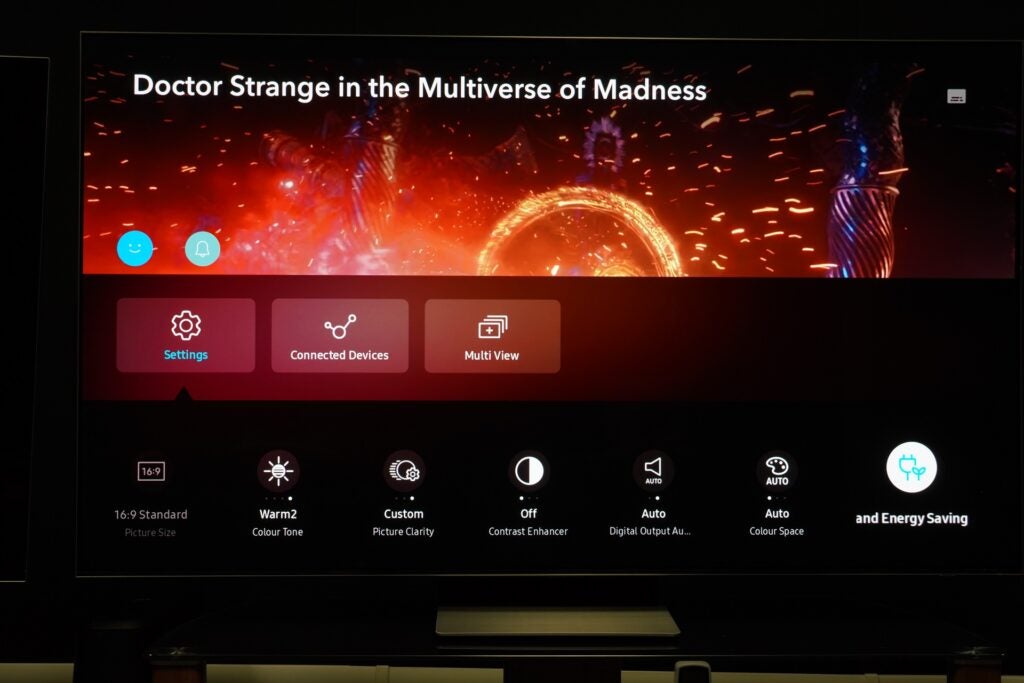
Like LG’s webOS, the roster of apps that Samsung’s Tizen includes is wide and varied. All the big popular apps such as Netflix, Prime Video, Disney+ and Apple TV are here, as are all the UK catch-up and on-demand apps in their individual form. Samsung doesn’t support the Freeview Play umbrella, presenting its own TV Plus service as an alternative.
Samsung’s TV Plus is an Internet-based content service that is free to use and offers access to live and on-demand channels. The service differs slightly in different regions (due to rights issues), with around 100 channels to choose from that include CNN, Bloomberg, Comedy Hub, Tastemade and America’s Got Talent, which is an exclusive in the UK.
Features
- Cloud gaming integration
- Low input lag
- Four HDMI 2.1 inputs
Like most new Samsung’s smart TVs, the S95B supports the SmartThings app that can be used as another means of operating the TV over the remote, and there’s also integration with services such as Ring, Arlo, Philips Hue and Nanoleaf.
If you have a SmartThings account it makes setting the TV up an easier and faster process, as it can carry over stored backups of previous Samsung TVs owned and restore them on the S95B.
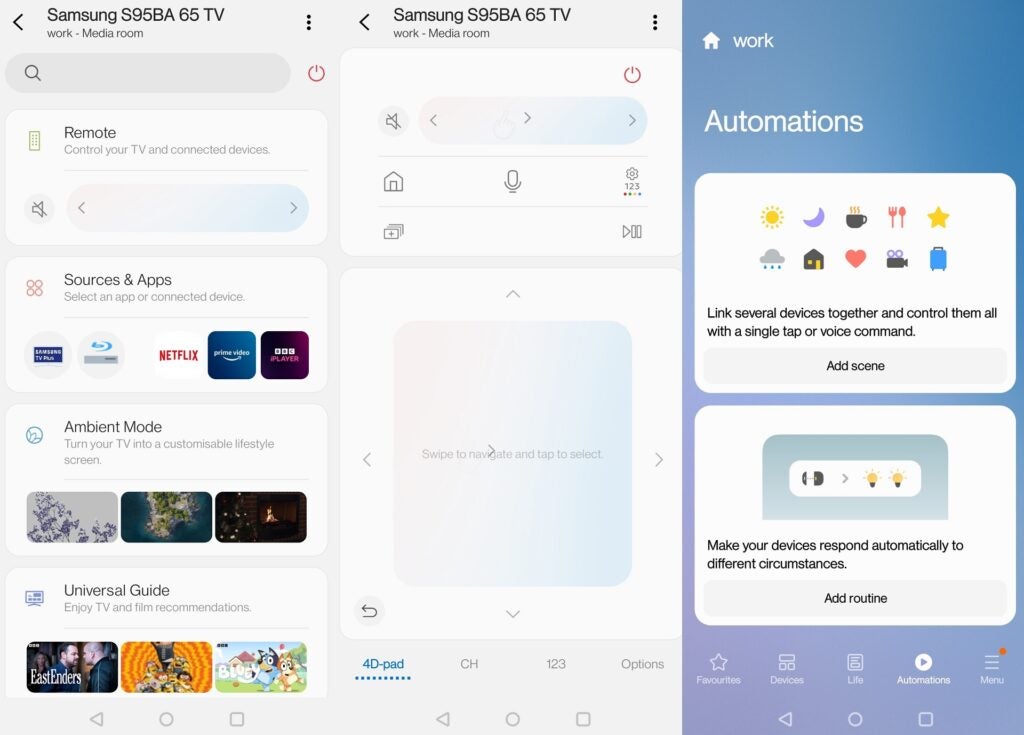
With the Multi-View feature, two screens can be watched simultaneously. Amazon Alexa, Google Assistant and Samsung’s Bixby provide voice assistant support, and there’s Google Duo support if you have a webcam to connect to the TV.
When it comes to gaming there’s plenty for console and PC gamers to take in. ALLM (Auto Low Latency Mode) puts the S95B QD-OLED into its lowest latency state, and I measured latency at 9.2ms (at 60Hz). With VRR enabled that figure can drop for even more responsive gaming with compatible games up to 4K/120Hz.
HDMI VRR and AMD FreeSync Premium are supported for console and PC respectively, producing a more consistent visual performance. The Game Motion Plus mode adds a several seconds of latency but offers settings for reducing blur and judder and is best used with games that don’t require quick inputs like RPGs. The S95B also supports the Super Ultra Wide Game View feature for PC that changes the aspect ratio from 16:9 to widescreen 21:9 or 32:9.
With the Samsung Gaming Hub, the S95B includes the likes of Xbox Game Pass, Twitch, Google Stadia, Nvidia GeForce Now and (in the US) Amazon’s Luna cloud/subscription services.
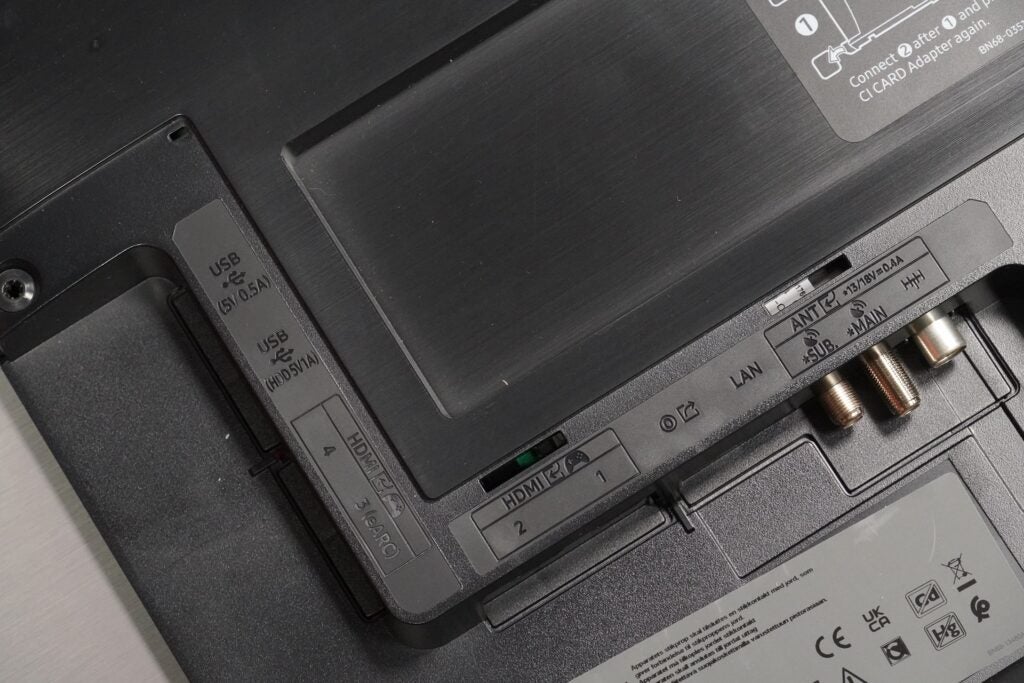
ALLM and VRR are supported across all four HDMI 2.1 inputs, which brings flexibility in which device you want to plug to which input – eARC input is HDMI 3 for connecting a Dolby Atmos soundbar. There are two USB 2.0 ports (surprisingly no USB 3.0), ethernet, digital audio out, two satellites, antennae, and CI+ 1.4 slot. Wi-Fi (AirPlay 2, Chromecast, DLNA, Wireless Dex) and Bluetooth 5.2 cover the wireless options.
Picture Quality
- Picture modes need tweaking out the box
- Excellent black levels and good shadow detail
- Expressive HDR performance (in the right mode)
- Great viewing angles/reflective technology
Since QD-OLED was first announced, it was speculated it’d rectify the relative lack of brightness that OLED faces against its LCD counterparts, combining the black levels, contrast and pixel level control over the image with a higher brightness to produce a wider range of colours than ‘standard’ WRGB OLEDs (which LG manufactures) can do.
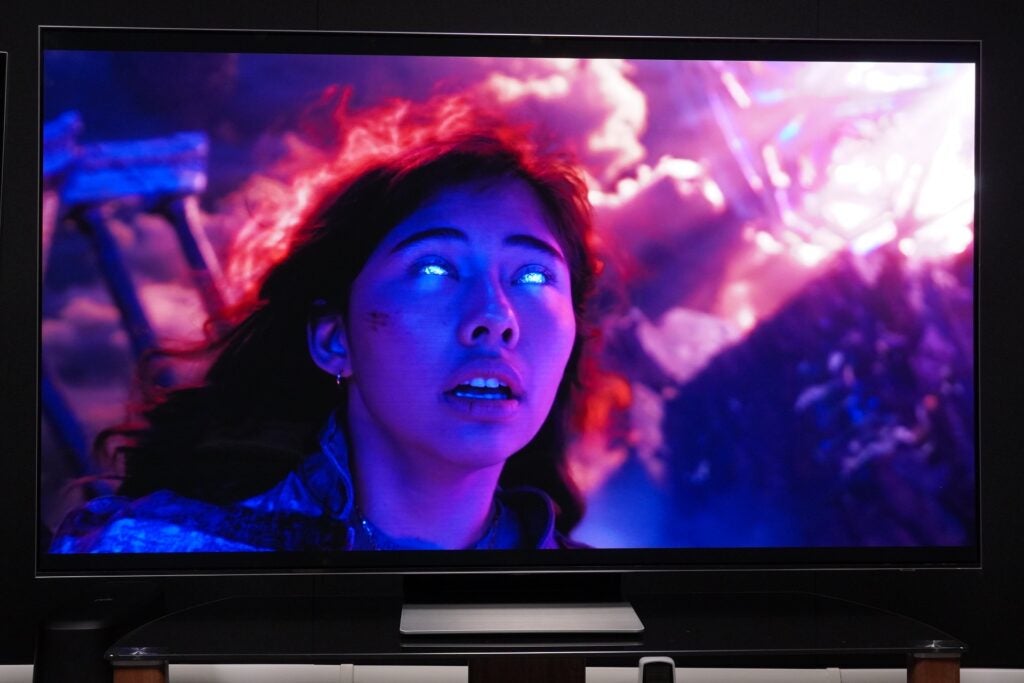
The difference between the Samsung S95B and the LG G2 isn’t massive in that respect. On a 10% HDR window I measured the S95B at a peak brightness of 1044 nits, but it’s enough to be the brightest OLED I’ve encountered. But brightness is only part of the recipe and there are other ingredients that go into the cooking. The Samsung S95B is enjoyable meal, but enjoying it does feel a little harder in certain areas.
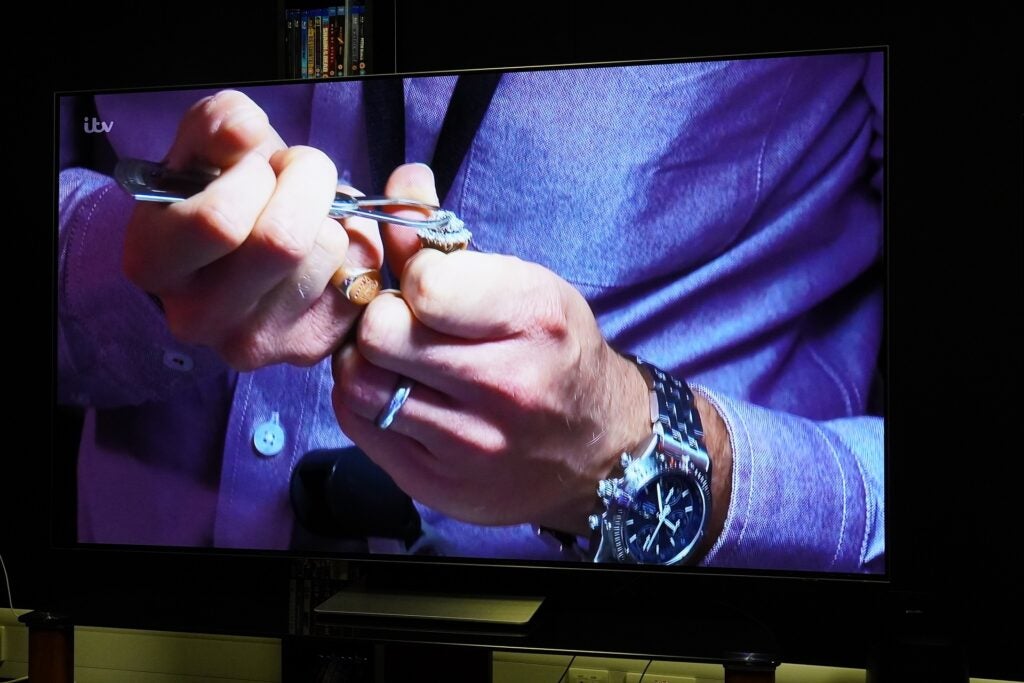
The QE65S95B’s upscaling performance is consistent with Samsung’s QLEDs, which is to say it’s very good. HD broadcasts are supplied with good clarity and detail, the S95B is able to extract fine detail and good levels of sharpness that keep images looking natural and not overly processed. Allied with a punchy colour performance and varied complexions, it’s a bright and colourful image.
Detail levels can fall short in close ups of faces during Tipping Point on ITV, giving them a slightly soft and fuzzy look. In general textures are well conveyed, the S95B draws out finer details in clothing and food, with refined and clear edges that don’t produce any noticeable noise.
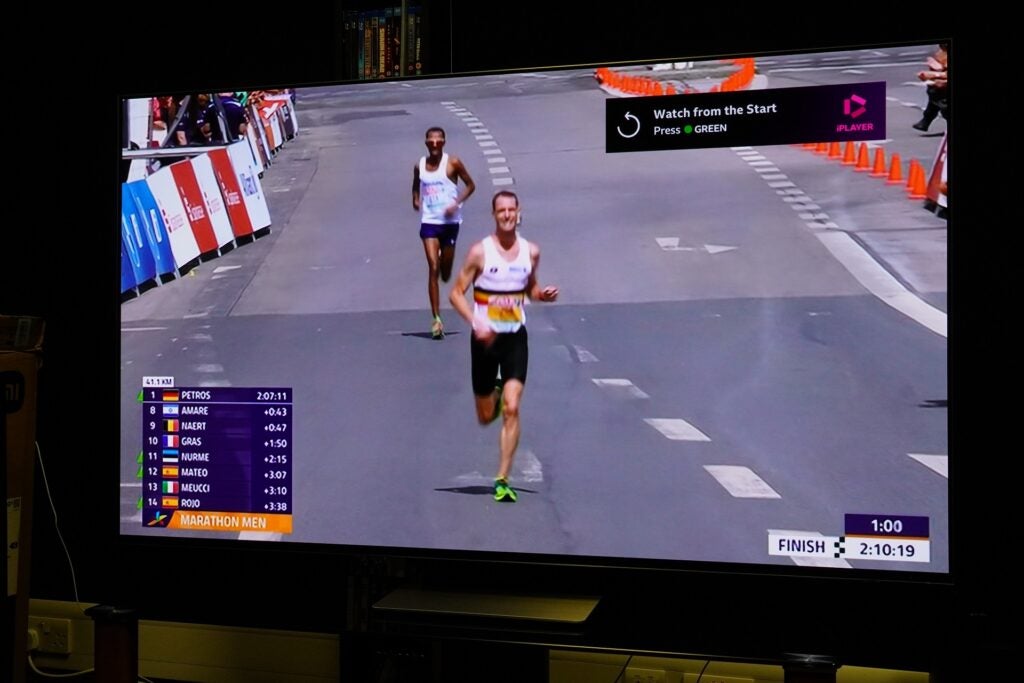
Upscaling of standard definition images is decent and watchable considering what the S95B QD-OLED is working with. There’s a shortfall of detail, clarity and sharpness in the drop to 480p broadcasts, with noise a more noticeable in the signal. You wouldn’t want to watch in SD too often, but it’s handled fairly well nonetheless.
Motion is still an area where Samsung trails behind Sony, Panasonic and LG. The Auto setting in the Auto Motion Clarity section is too strong with distracting stutter and judder right from the onset of the opening credits in 1917. There are artefacts noticeable with the hands of Lance Corporal Blake and Schofield as they exchange some bread, along with noise and pixelation around their rifles and around their helmets.
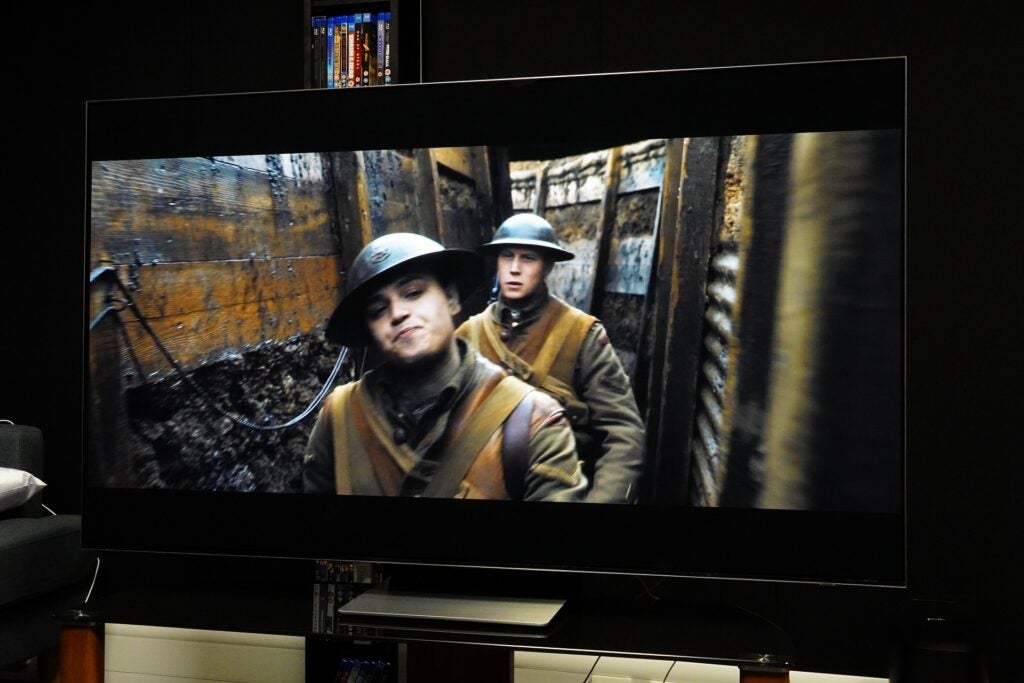
The Custom setting resolves motion in a better, smoother way with no noticeable artefacts. There’s some blurriness later in 1927 during faster camera pans, but it’s a much better performance overall.
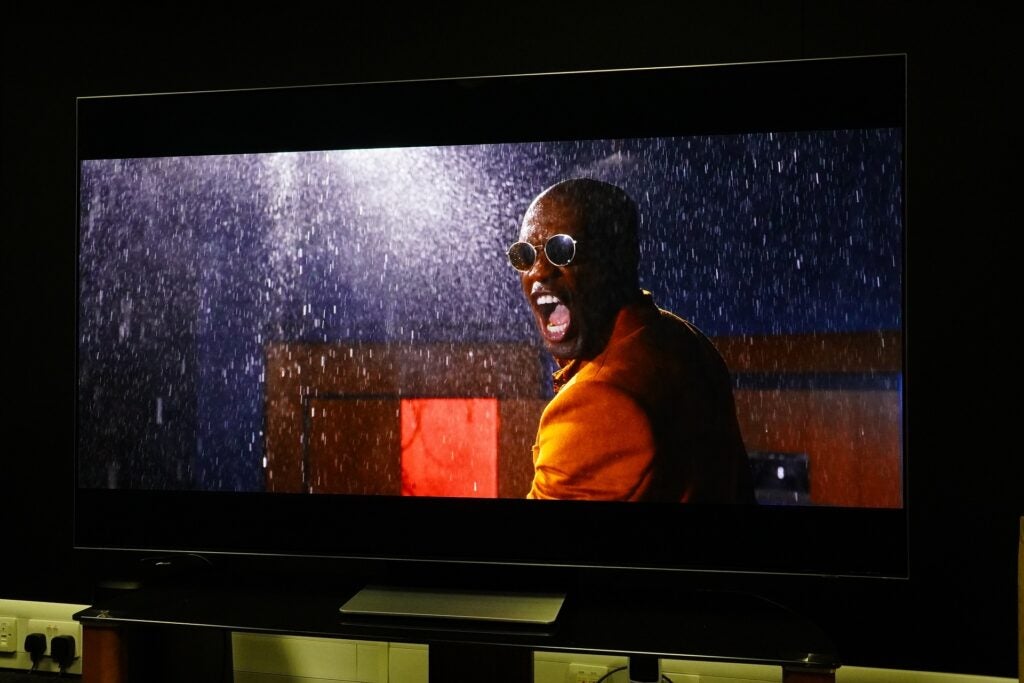
With 4K HDR content, the Samsung S95B delivers some beautiful images, full of contrast and lovely, varied colours that look accurate. But I feel the S95B’s picture modes could be tuned slightly better. For instance, The Matrix Resurrections looks gorgeously colourful and saturated in the Standard picture preset, with details such as the blue tint of The Analyst’s glasses look really strong, but watching Star Trek Beyond in the same mode sees the reds and blues expressed a little too strongly.
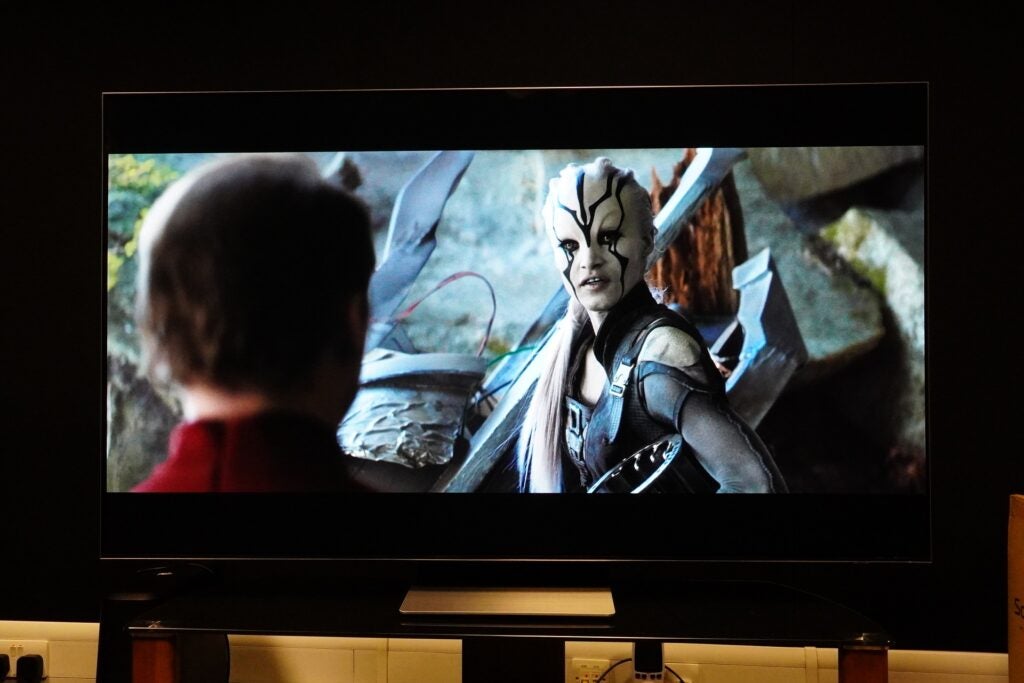
Watch both films in Movie preset and Resurrections fares worse, its colours lacking punch and vim, while Beyond is more accurate and balanced. The Dark Knight Rises looks on point in Filmmaker mode but less so in Movie and the blue tilt in Standard skews the film’s more realistic photography towards a more garish look. A little bit finessing and fine-tuning is needed to get the best from the S95B’s picture.
Movie along with Filmmaker the most accurate out of the box, but there can be a shortage of shadow detail in the darkest parts of the image along with a lack of outright brightness that makes for a dim-looking image, which is most easily rectified by turning Contrast Enhancer up to High.
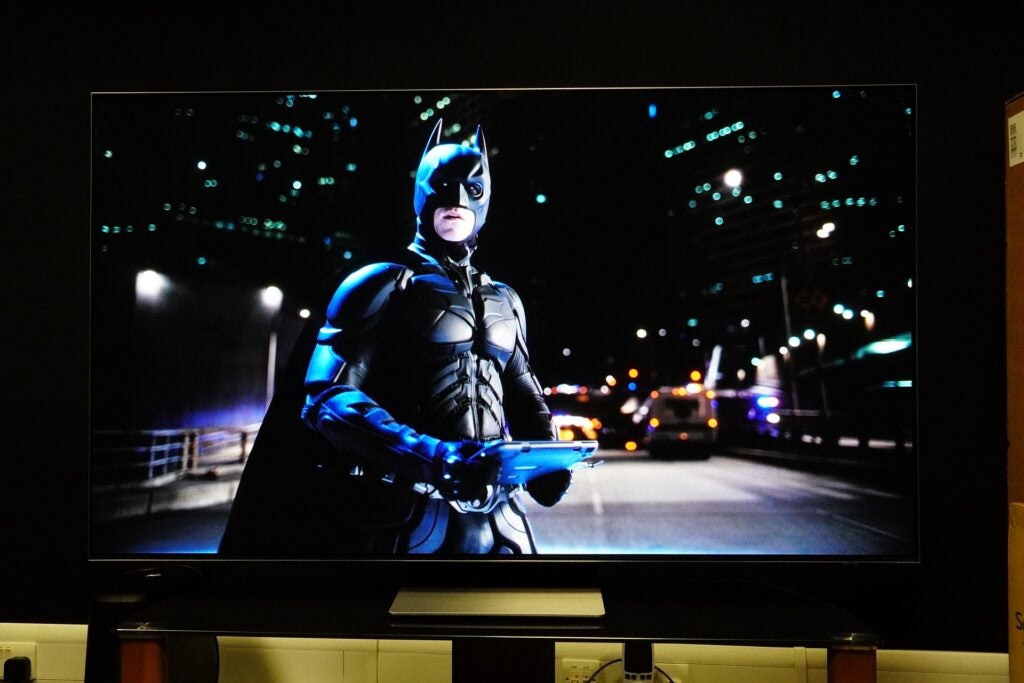
Watching Ridley Road on iPlayer in 4K HLG (Standard mode) and while its performance is undeniably colourful in places, the red/orange push to complexions are overcooked – every character looks like they’ve been sunbathing in Marbella. The G2 is more natural in appearance, in other scenes the S95B looks plainer than the G2, while LG’s OLED reveals more detail and looks a little sharper too. The S95B’s performance feels up and down at times.
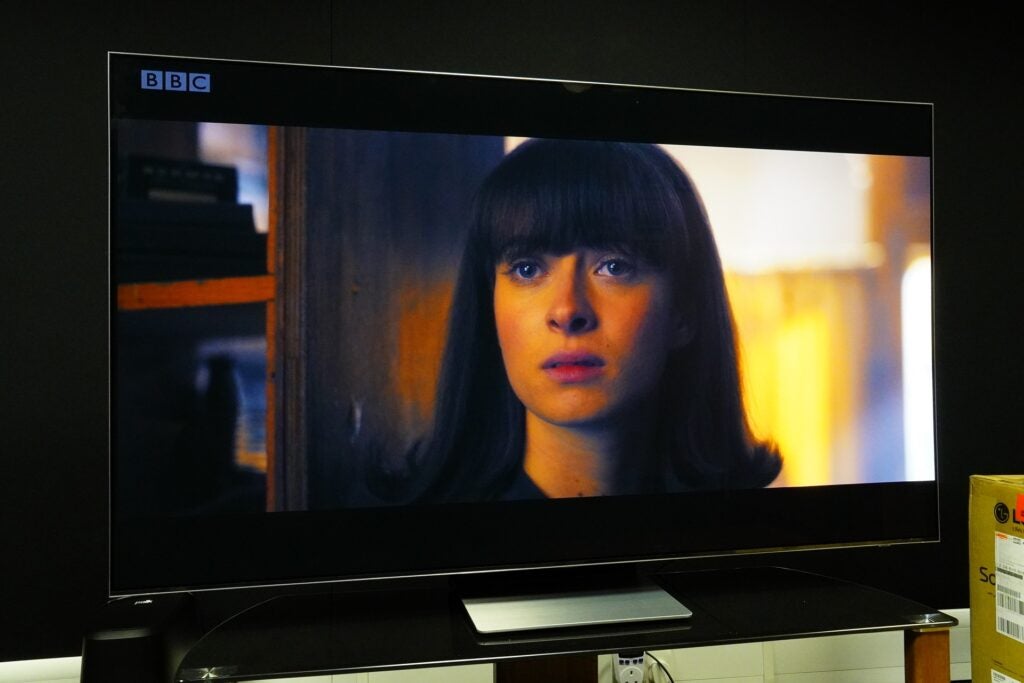
Shadow detail is better conveyed on the S95B than it is on the G2 with V for Vendetta, but the advantage is slight, with further tweaking in the (Shadow Detail) settings needed to reveal the creases and lines of V’s cloak. Watching a stream of Birds of Prey (Prime Video, Filmmaker mode) and the QE65S95B looks the more accurate, especially with white, red and blue colours (the white door of Harley Quinn’s apartment has a strange blue tint on the LG).
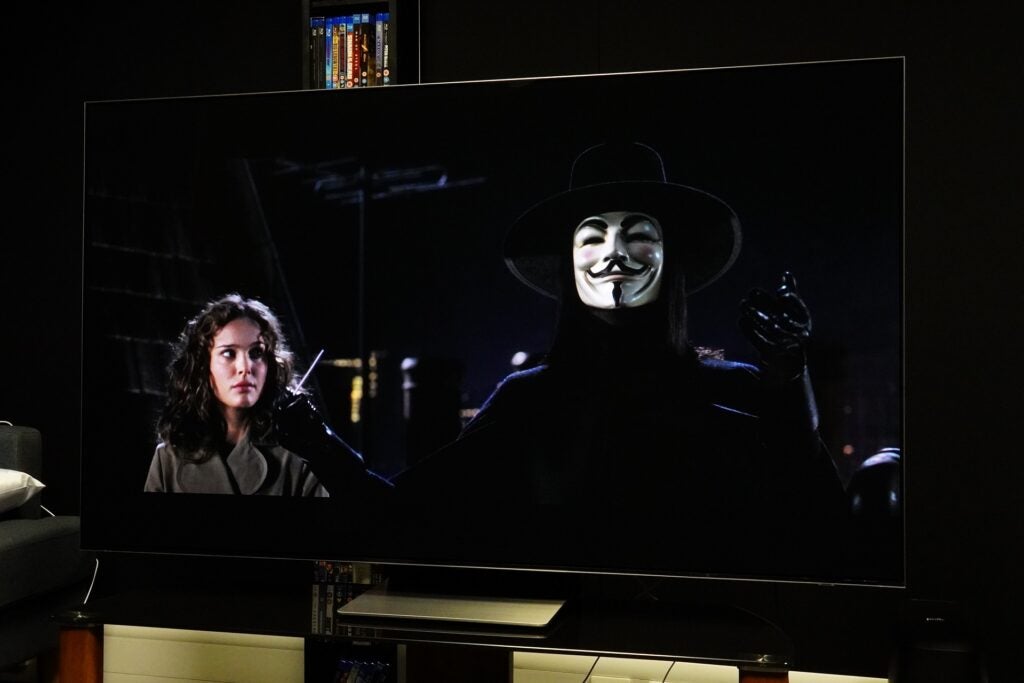
When the S95B is firing on all cylinders, pictures look tremendous. Films like Allied and The Matrix Resurrections look great, with superb levels of detail, wringing out all the textures from the production design and costuming in both films, while faces are rendered razor sharp and clear. The stubble on Neo’s face is to the point where you can start counting the individual hairs.
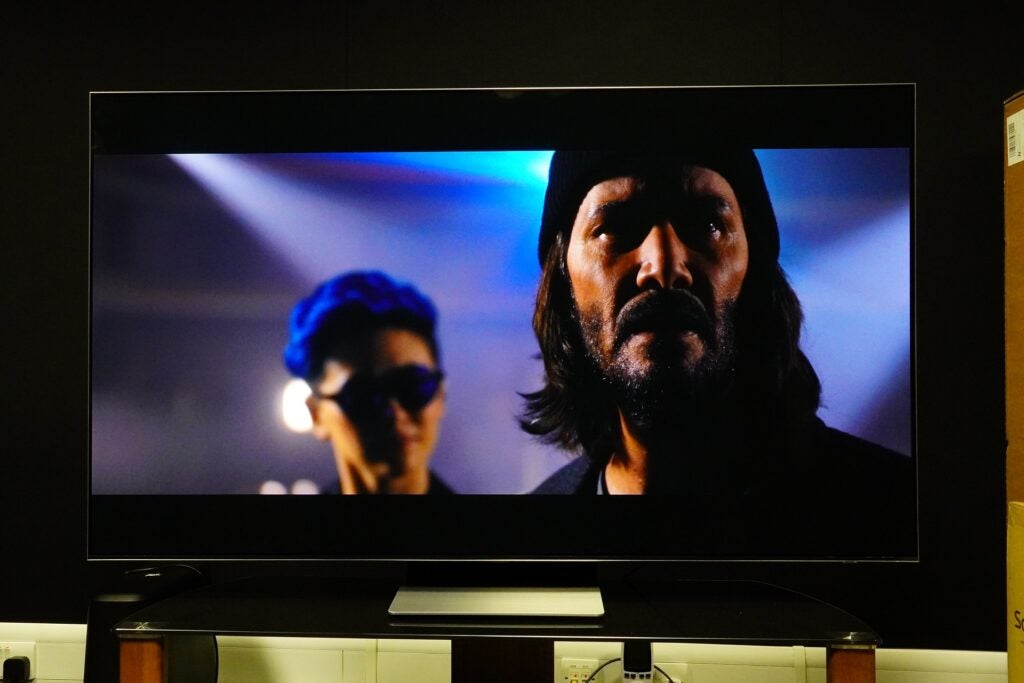
Black levels have excellent depth and solidity, the extra headroom for brightness produces striking contrast in Super 8 (4K Blu-ray) helping colours pop off the screen, the explosions of the train wreck against the night sky are fabulously bright and colourful, and the lens flare shines bright. Viewing angles are superb, colours maintain their consistency better than on WRGB OLEDs at extreme angles, and the S95B’s Anti Reflection technology bats away most light sources and reflections from distracting what’s happening on screen.
Ultimately, it feels as if the S95B requires a few too many tweaks out the box to find the best picture, but when it’s in the right mood, the images the S95B delivers look fantastic.
Sound Quality
- Good levels of detail, clarity and definition
- Surprisingly big in scope
- Struggles with bass
The S95B’s sound is surprisingly big in size, punchier and more impactful than the G2 with voices described with better clarity and solidity watching Moon Knight. There’s dynamism to the S95B’s 40W speaker setup that outclasses its restrained LG counterparts with better detail and definition. There’s Dolby Atmos support and its OTS (Object Tracking Sound) arrangement is not as clear or as sharp as Sony’s Acoustic Sound system, but it is not far off.
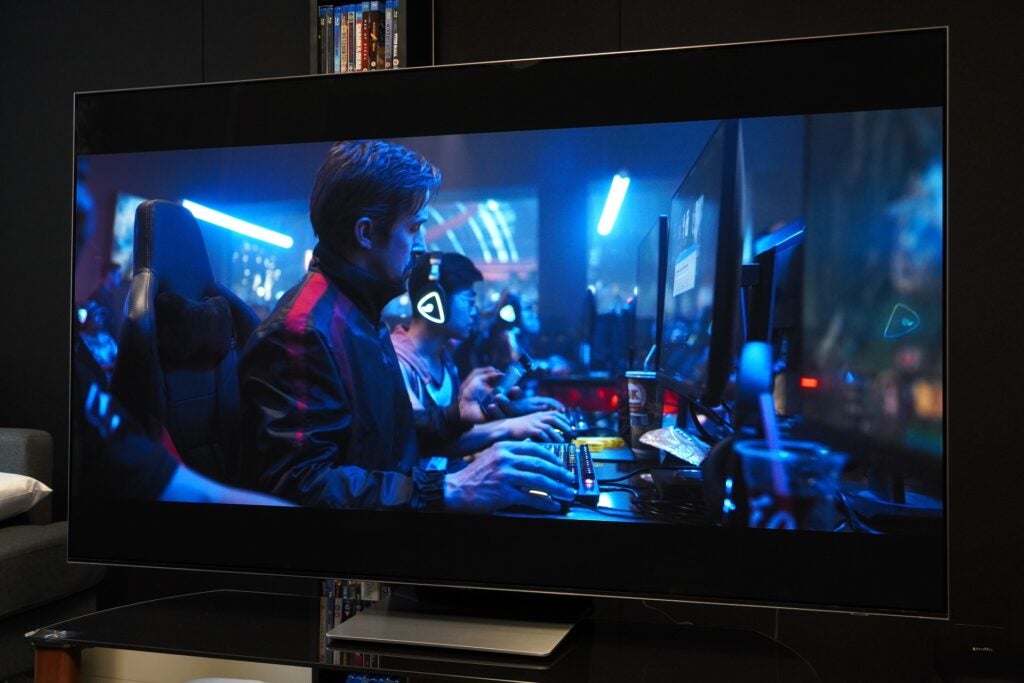
Where it struggles is dealing with bass. While the fights between Bane and Batman carry a good deal of weight with the punches, there were times when Bane speaking incurred distortion. Bass-heavy sequences in The Gray Man also produced some distortion, as did some scenes in Disney+ shows such as Hawkeye and She Hulk: Attorney At Law. It’s absolutely worth thinking about a soundbar to go with this TV.
There’s the option of two sound modes in Standard and Amplify, and the latter does offer a step up in loudness and detail, but the bass issue is present in both modes. On its own the S95B is capable, but the distortion is a distraction.
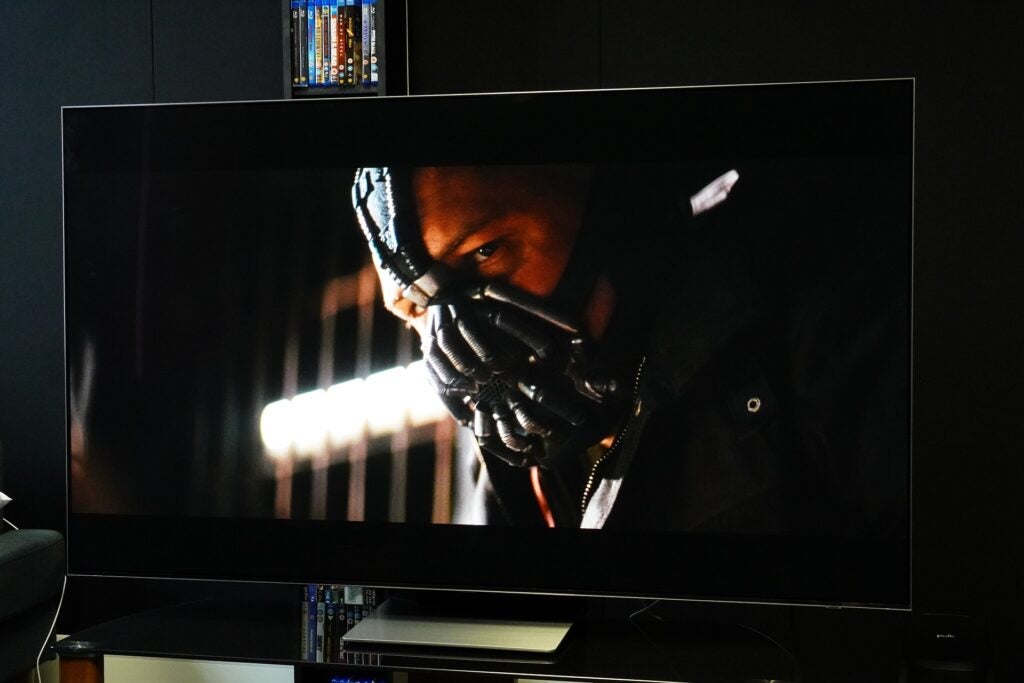
Latest deals
Should you buy it?
For the brightest OLED yet The S95B is the brightest OLED we’ve tested and its picture quality is largely excellent but does require tweaking in its HDR modes.
If you want a more consistent picture performance In some regards the LG G2 is more consistent than the Samsung and the Sony A95K produces brilliant 4K HDR images and better motion processing. The S95B is very good but not the best.
Final Thoughts
As a new breed of TV, the Samsung S95B QD-OLED does impress but could use some more fine tuning to balance its picture modes with a little too much tweaking needed to get the best from the TV.
The audio performance is better than expected, though beset by distortion in the lower frequencies, while the new Tizen interface is sluggish in response. In the battle of the QD-OLEDs, the Samsung offers better value, especially for gamers. But for picture, the Sony A95K emerges ahead.
How we test
We test every televisions we review thoroughly over an extended period of time. We use industry standard tests to compare features properly. We’ll always tell you what we find. We never, ever, accept money to review a product.
Find out more about how we test in our ethics policy.
Tested for a month
Tested with real world use
Benchmarked with discs and software
FAQs
Samsung does not support Dolby Vision on any of its TV models.
Full specs
Sustainability
Trusted Reviews’ holds the fact that global warming is not a myth as a core value and will continuously endeavour to help protect our planet from harm in its business practices.
As part of this mission, whenever we review a product we send the company a series of questions to help us gauge and make transparent the impact the device has on the environment.
We currently haven’t received answers to the questions on this product, but will update this page the moment we do. You can see a detailed breakdown of the questions we ask and why in our sustainability info page.








